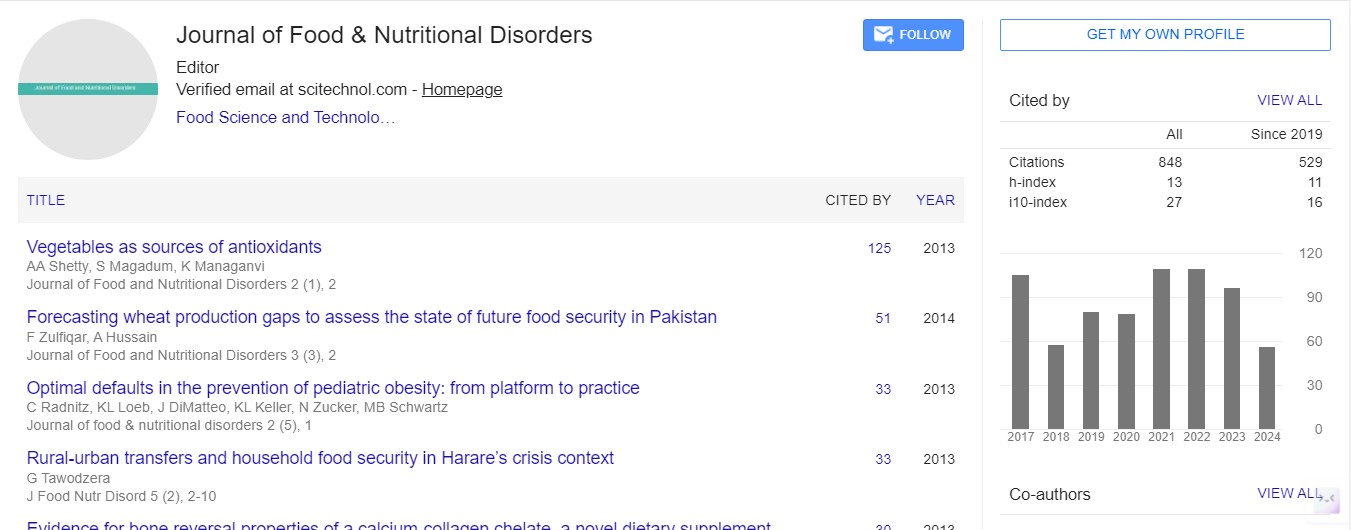An UHPLC/MS/MS method for the determination of aminoglycoside antibiotics in a variety of matrices of animal origin
Ewelina Nowacka-Kozak
National Veterinary Research Institute, Poland
: J Food Nutr Disor
Abstract
The aminoglycosides are one of the most commonly antibiotics classes used in animal husbandry for the treatment of bacterial infections. Because of their high residue level and prolonged withdrawal times, the application of these drugs as veterinary medicines carries the risk of developing resistance among bacteria, which might reduce the efficacy of these drugs as human medicines. Under the EU official monitoring programs, for the food safety and consumer’s health’s assurance, the obligatory control of aminoglycoside in food of animal origin is carried out. This paper describes an analytical method for the determination of twelve aminoglycosides (streptomycin, dihydrostreptomycin, spectinomycin, neomycin, gentamycin, hygromycin, paromomycin, kanamycin, tobramycin, amikacin, apramycin and sisomycin) in muscle, liver, kidney, milk, eggs and honey. Ribostamycin was used as internal standard. The AMGs were extracted from samples with extraction buffer (10 mM NH4OOCH3/0.4 mM Na2EDTA/1% NaCl/2% TCA). Polimeric weak anion cartridges were used for clean-up step. Elute with formic acid/isopropanol/water (0.5 mL 10:5:85) and add 0.3 M HFBA. The final extract was analyzed using ion-pair reverse phase Ultra-High Performance Liquid Chromatography (UHPLC) with detection by triple quadrupole Mass Spectrometry (MS/ MS). Chromatographic separation was achieved on Poroshell (2.1x 150 mm) analytical column using mobile phase consisting of acetonitrile and Heptafluorobutyric Acid (HFBA) as the ion-pairing reagent. Total run time of 7 min. The method was validated according to the requirements of European Commission Decision 2002/657/EC. Good performance characteristics were obtained for recovery, linearity, precision, specificity, decision limits (CCα) and detection capabilities (CCβ). The Limit Of Quantification (LOQ) were ranged from 10 to 50μg/kg. This method is simple, rapid determination and high sensitivity, which can be used in the determination of multi - aminoglycosides in complex samples.
Biography
E-mail: ewelina.nowacka@piwet.pulawy.pl
 Spanish
Spanish  Chinese
Chinese  Russian
Russian  German
German  French
French  Japanese
Japanese  Portuguese
Portuguese  Hindi
Hindi 
